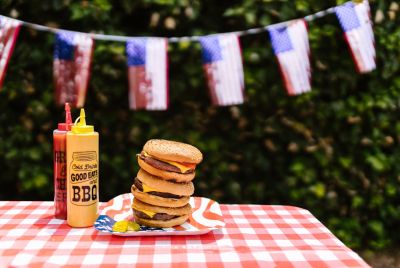Is Outback Steakhouse Filing for Bankruptcy? 21 Stores Closed since October

KEY POINTS
- Outback Steakhouse's parent company closed 21 restaurants and suspended dividends amid restructuring
- Bloomin' Brands is investing $75 million to revitalise Outback through menu and service improvements
- The company denies bankruptcy rumours, focusing instead on long-term consolidation and growth recovery
Outback Steakhouse is entering a critical phase in its corporate restructuring after parent company Bloomin' Brands Inc. confirmed the closure of 21 restaurants in October as part of a broader financial recovery strategy.
The Florida-based hospitality group disclosed the closures in its latest quarterly report, describing them as an essential component of a 'comprehensive turnaround strategy' intended to revitalise the casual-dining brand and restore shareholder confidence.
In addition to the 21 closures, Bloomin' Brands plans to shut a further 22 restaurants across its portfolio — including Carrabba's Italian Grill and Bonefish Grill — as leases expire over the next four years. While the company did not reveal the exact number of Outback locations affected, the brand now operates 670 US sites, down more than 10% from a decade ago, when it maintained 750.
Restructuring amid Slowing Growth
The company reported a marginal 0.4% same-store sales increase in the third quarter — Outback's first positive growth in two years — highlighting the fragile state of the business. In comparison, competitors such as LongHorn Steakhouse and Texas Roadhouse reported growth of 5.5% and 5.8%, respectively.
Bloomin' Brands' stock has fallen by approximately 40% since the beginning of 2025, reflecting investor concern over declining profitability and slowing customer traffic. The company has since suspended shareholder dividends and recorded a $33 million (£26.5 million) impairment charge to finance the turnaround.
'Outback Steakhouse has incredible brand equity,' said CEO Mike Spanos in an analyst call. 'We have strong brand awareness and a tremendous opportunity to convert that awareness into restaurant visits.'

The group intends to invest $75 million (£60 million) over three years in a targeted revamp focused on operational efficiency, menu simplification, and enhanced customer experience. The plan includes reducing server table loads, upgrading steak quality, and expanding pickup and delivery areas to meet evolving consumer preferences.
Operational Overhaul and Market Repositioning
Bloomin' Brands aims to complete renovations across all Outback locations by 2028, introducing redesigned bars, brighter interiors, and smaller kitchens optimised for delivery and takeaway efficiency.
'These are business decisions that are part of our ongoing turnaround plan,' a company spokesperson said. 'We considered multiple factors including sales, traffic, and trade area performance. Our goal is to reallocate resources more efficiently while retaining as many team members as possible.'

Analysts believe Outback's retrenchment reflects broader pressures in the casual dining sector, where consumer spending has shifted toward value-driven and experiential dining. Competitors such as Chili's and Applebee's have benefitted from aggressive discounting, while premium steakhouses like Texas Roadhouse continue to capture market share through perceived quality and consistency.
Bankruptcy Fears Unfounded — For Now
Despite speculation on social media, Outback Steakhouse is not filing for bankruptcy. The closures and cost adjustments are part of a strategic consolidation designed to protect profitability and streamline operations rather than a response to insolvency.
Industry observers note that the company's outlook depends heavily on the success of its reinvestment strategy and its ability to rebuild consumer loyalty. Should the turnaround succeed, Outback could re-emerge as a stable competitor in the mid-tier dining segment; failure, however, could accelerate further downsizing.
As Spanos emphasised, the brand's recovery will hinge on execution: transforming strong name recognition into renewed customer engagement. For now, the steakhouse pioneer remains in transition — balancing brand legacy with the need for financial realism in a tightening market.
© Copyright IBTimes 2025. All rights reserved.





















